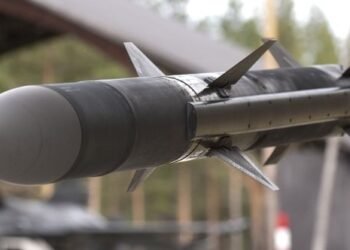The locally fabricated rocket, found between S. Lonphai and Tuikong villages, was fitted with explosives and a detonator — suggesting it was meant for a large-scale attack, officials said.
BY PC Bureau
October 8, 2025: In a major security breakthrough, Manipur Police and central forces have recovered a massive 9-foot-long improvised rocket packed with explosives and a detonator weighing nearly 200 kilograms. The recovery was made on October 6 in a remote forested stretch between S. Lonphai and Tuikong villages under Churachandpur Police Station, officials said.
According to a statement by the Manipur Police, the locally fabricated rocket appears to have been designed for a high-impact strike, highlighting an alarming escalation in the level of weapon sophistication in the conflict-hit region. The device has been secured, and a joint investigation has been launched to trace its origin, makers, and possible links to militant outfits active in the state.
While the police have not disclosed how the operation was initiated or whether the rocket was in working condition, sources said its discovery points to the presence of organized insurgent manufacturing units. No arrests have been made so far.
READ: Threat to Tribals’ Lands Under Forest Act, MNF Calls Mizoram Shutdown
The seizure comes amid intensified counter-insurgency and anti-arms trafficking drives across Manipur, where security forces have been battling to stabilize the situation amid ongoing ethnic unrest and militant activity. Police have urged the public to remain alert and report any suspicious movements or materials.
On 06.10.2025, Security Forces recovered a 9 feet long country made rocket consisting explosives and a detonator weighing 200 kgs from the general area between S. Lonphai and Tuikong villages under Churachandpur-PS, Churachandpur district. pic.twitter.com/lzhgEM7dsy
— Manipur Police (@manipur_police) October 7, 2025
How Improvised “Country-Made” Rockets Are Prepared
Improvised rockets, often referred to as “country-made” or homemade rockets in regions like Manipur are rudimentary ballistic weapons assembled by non-state actors, including militants, using locally available materials and basic engineering techniques. These devices are typically designed for short- to medium-range attacks (up to 5-7 km in some cases) and are packed with explosives to maximize destructive impact. Unlike professionally manufactured munitions, their construction relies on scavenging, simple welding, and trial-and-error testing, often in remote or cross-border areas.
The process draws from historical insurgent adaptations seen in conflicts in Iraq, Afghanistan, Libya, and Myanmar, where groups like the Taliban, ISIS, and local militias have refined similar tactics .Based on documented recoveries and security analyses, the preparation of such rockets generally involves four key stages: sourcing materials, assembling the body and warhead, integrating propulsion and stabilization, and adding detonation mechanisms. These steps are adapted from broader improvised explosive device (IED) techniques but scaled up for projectile delivery.













